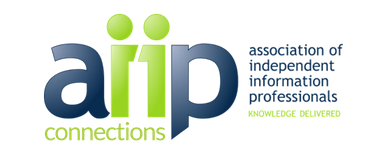When a project diverges from plan: Lessons learned and recovery strategies

Cindy Romaine reports on a some practical tactics and strategies shared by three experienced AIIP members – Jennifer Pflaumer, Paroo, Loretta Shaw, LMRS Information Services, LLC and Jan Sykes, Information Management Services, Inc at AIIP 2019’s panel session – when a project diverges from plan.
Raise your hand if you’ve had a project that went perfectly according to plan. Not! It rarely happens. So how do you fine-tune and adjust your timeline, alter your communication strategy, and avoid scope creep so the project stays on track and the client stays in the “Win” column?
Scope creep
If you have to ask “what is scope creep?” that may mean that you have not been subjected to mushrooming expectations that make a project nearly impossible once the client has signed the contract. Our presenters offered these suggestions, from their own experiences, for managing scope creep and keeping your client informed and satisfied:
- Keep your focus on delivering a quality product even when scope is changing
- Sometimes you have to trust your instinct that you will be compensated appropriately
- Inform the client that after the contract has been signed that any additional requests will result in an amended proposal
- Phase the project so that client has choices in what he/she would like you to do
Communication
On some projects communication can be as important as, or more important than the deliverable, so make sure you allow plenty of time in your project plans for frequent updates and sharing interim progress. Take it from the experts, you will need to:
- Clarify every detail to the extent possible at the outset
- Have frequent check points, every day or intra-day if needed
- Temper your own desire to make a difference and deliver what the client wants
- Always communicate authentically
Subcontracting – Having a subcontractor
If the project requires expertise you don’t have or a timeline that requires more than you can do independently, you may want to turn to an AIIP colleague (or others), to achieve your goals. If you hire a subcontractor, the presenters advised you to take these precautions:
- Check references thoroughly
- Be upfront about expectations around communication and deadlines
- If possible, interview all secondary sub-contractors to the main subcontractor
Subcontracting—Being a subcontractor
Perhaps you have unique expertise that can enhance another contractor’s project. Perhaps you can help achieve a looming deadline. If so, you may be the subcontractor under another firm’s engagement contract. Our expert presenters recommended:
- Getting involved in proposal process with the client if at all possible to ensure budget and expectations are in line
- Clarifying expectations for communication and processes at beginning of the engagement
- If you are a subcontractor to a chain of subcontractors – have a written contract with your direct contractor and get contact information of the primary contractor
It was evident from the discussion that the information shared in the presentation was hard-learned. So please use this advice as a guide to improve your chances of success when your projects diverge from plan.
This is actually the last post in our AIIP19 report series. We hope you have found them informative and useful. A huge thank you to our conference reporters – we could not have put this series together without you.
With the conference series wrapped up, AIIP Connections will publish new material every two weeks.





